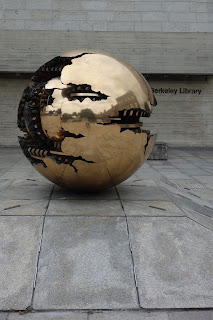Bob and I spent our last two nights in Ireland, in Dublin, the largest city and Capital of Ireland. Basically, we had one day, Sunday, September 12, 2021, to explore the city with origins traced back to 140 AD according to writings of Ptolemy. We found one of our LDS Church congregations to join for sacrament services that morning, and booked tickets to see the Book of Kells at the library of Trinity College that afternoon. We found Dublin to be a vibrant and diverse city which certainly deserved more time to enjoy than what we had available to us. Below are some of the recognizable sites in Dublin.
Trinity College, founded by Queen Elizabeth I in 1592, is the oldest university and research center in Ireland. The campus is beautiful and is one of the most visited attractions in Dublin.
Bob and I began our tour of the library in a museum designed to inform visitors of the significance of the Book of Kells. It is a book, written in Latin, containing the four gospels of the New Testament, which has been elaborately decorated with calligraphy, borders and small illustrations. It was created in about 800 AD in a monastery in Scotland or Ireland. And it is spectacular! Because visitors are not allowed to touch or photograph the book, visiting the museum is the best way to see what is contained therein. The book is only 13x10 inches and contains 340 leaves of paper or parchment. I also loved that this museum housed the original Ogham stones from which the oldest known alphabet in Ireland was discovered.
Quoting Atlas Obscura: Built between 1712 and 1732, the Long Room at Trinity College’s Old Library holds the collection’s 200,000 oldest books. The distinctive and beautiful barrel ceiling was added in 1860 to allow space for more works when the existing shelves became full. Marble busts of famous philosophers and writers line the central walkway of the nearly 200-foot-long room, created by sculptor Peter Schemakers beginning in 1743. The enormous collection housed in the long room includes a rare copy of the 1916 Proclamation of the Irish Republic and the 15th-century wooden harp in the library which is the model for the emblem of Ireland. Simply gorgeous, isn't it?!
Before leaving Ireland, I insisted on eating some delicious traditional Irish Stew made with slow cooked lamb and vegetables. While dining, we were entertained by a gathering of young students dancing in the street below us. There must have been some kind of Irish festival going on. We saw police breaking up crowds throughout Dublin and possibly discouraging the use of illegal drugs. But we enjoyed the impromptu music in the streets and felt as if a farewell party had been staged just for us. In a last minute search for the perfect souvenir (in addition to my silver Blarney Castle charm), we found this beautiful ceramic lady; although it is not particularly an Irish icon, ceramics are a traditional artform all over this unforgettable island.
It's difficult to summarize my feelings about Ireland after having spent two magical weeks immersed in the beauty of the lush green Emerald Isle. So instead of trying to do so, I'll conclude with the words of one of Ireland's most beloved poets, William Yeats. He wrote this as a young man, longing for home while studying abroad. He eloquently captures the essence of his peaceful county home in a land that I have grown to love.
The Lake Isle of Innisfree
By William Butler Yeats
I will arise and go now, and go to Innisfree,
And a small cabin build there, of clay and wattles made;
Nine bean-rows will I have there, a hive for the honey-bee,
And live alone in the bee-loud glade.
And I shall have some peace there, for peace comes dropping slow,
Dropping from the veils of the morning to where the cricket sings;
There midnight’s all a glimmer, and noon a purple glow,
And evening full of the linnet’s wings.
I will arise and go now, for always night and day
I hear lake water lapping with low sounds by the shore;
While I stand on the roadway, or on the pavements grey,
I hear it in the deep heart’s core.








.JPG)





























.JPG)
















No comments:
Post a Comment